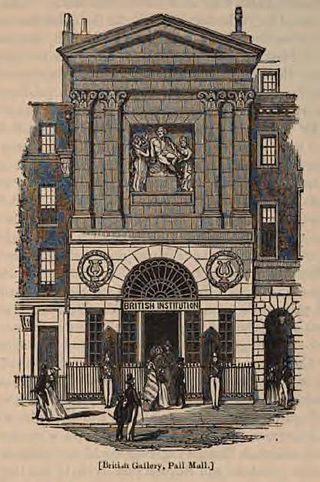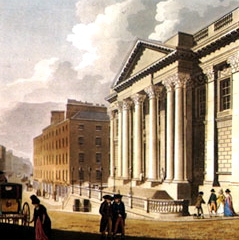
Sir John Soane was an English architect who specialised in the Neo-Classical style. The son of a bricklayer, he rose to the top of his profession, becoming professor of architecture at the Royal Academy and an official architect to the Office of Works. He received a knighthood in 1831.
This is a timeline of architecture, indexing the individual year in architecture pages. Notable events in architecture and related disciplines including structural engineering, landscape architecture, and city planning. One significant architectural achievement is listed for each year.
The year 1902 in architecture involved some significant events.
The year 1908 in architecture involved some significant architectural events and new buildings.
The year 1837 in architecture involved some significant events.
The year 1753 in architecture involved some significant events.
The year 1814 in architecture involved some significant events.
The year 1792 in architecture involved some significant events.
The year 1858 in architecture involved some significant events.
The year 1817 in architecture involved some significant events.

George Dance the Younger RA was an English architect and surveyor as well as a portraitist.

Neoclassical architecture, sometimes referred to as Classical Revival architecture, is an architectural style produced by the Neoclassical movement that began in the mid-18th century in Italy, France and Germany. It became one of the most prominent architectural styles in the Western world. The prevailing styles of architecture in most of Europe for the previous two centuries, Renaissance architecture and Baroque architecture, already represented partial revivals of the Classical architecture of ancient Rome and ancient Greek architecture, but the Neoclassical movement aimed to strip away the excesses of Late Baroque and return to a purer, more complete, and more authentic classical style, adapted to modern purposes.
The year 1771 in architecture involved some significant events.
The year 1824 in architecture involved some significant events.
The year 1766 in architecture involved some significant events.
The year 1815 in architecture involved some significant events.
The year 1740 in architecture involved some significant events.

Thomas Cooley (1740–1784) was an English-born Irish architect who came to Dublin from London after winning a competition for the design of Dublin's Royal Exchange in 1768.
John Sanders (1768-1826) was an architect and the first pupil of Sir John Soane taken on 1 September 1784. Sanders was born on 12 April 1768, the son of Thomas Sanders, a tallow-chandler of the parish of St Dunstan-in-the-East, London. He died at Reigate, Surrey early in 1826.




